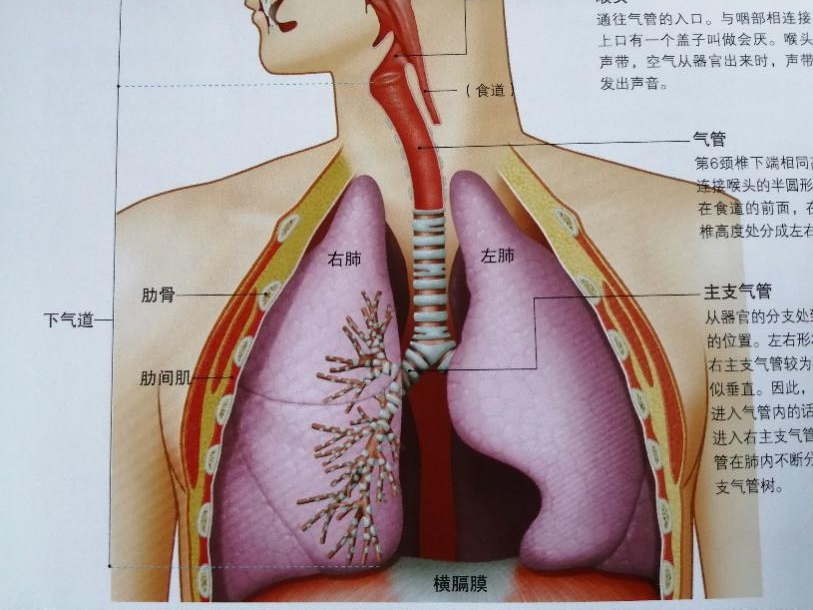
当前课程知识点:计算几何 > 01. Convex Hull > I. Graham Scan: Correctness > 01-I-01. Left Turn
好 刚才我们已经看到了
这个由著名的Graham
来命名的这个著名的
Graham Scan算法
我们很可惜在现在为止
我们只看到了它的一些实例
实际上对于任何一个算法而言
在我们运用它包括分析它之前
首先要分析的一件事情
就是它是不是正确的
我们刚才举的那些实例
很遗憾只能说是佐证
而不能说是一个证明
接下来我们不妨就来解决
这个重要的问题
我们来建立它的正确性
有很多种方法
在这里我们不妨用数学归纳法
也就是说我们可以做这么样
一个归纳假设
在Graham Scan的过程中
尽管我们是一步一步地迭代
也可以认为是一步一步地
引入一个个的点
那么我们总可以假设
每当我们执行到第k个点的时候
当我们处理完了之后
我们所得到的都是前k个点
所能够对应的那个理论上讲
最好的凸包
那你可以知道
我们最终的情况
也就是当这个k等于n
所有的点都处理完之后
这个assumption
自然就变成了
我们的correctness
我们的归纳基础
也就是k = 3的时候
是显而易见的
我们把这个留给你在课后来完成
请证明,无论你给的点是多少
对于前三个点而言
它们所构成的必然是
它们所对应的那个凸包
其实也就是那个三角形
那么更一般的情况呢
假设我们已经对前k个点来说
按照Graham Scan
已经构造出了目前为止的
最优的凸包
那么在考虑下一个点的时候
Graham所给的建议
以及包括它的行动
是否也是正常的
我们说无非是两种情况
哪两种情况呢
分别对应地在这个图中就是
蓝色和绿色区域的情况
让我来解释一下
这两种情况是怎么划分的
假设我们的k = 9
也就是说我们已经构造出了
前九个点所构成的凸包
这个凸包由不超过9个点所构成
当然更一般的情况是
最后的这个极点
未必是9号
当然这里头我们不再考虑了
不妨假设就是它
现在我们就立足于它
来看看下一个点所处的位置
可能有什么情况
确实如我们刚才所言
无非要么就在这个
绿色的区域里头
要么就在这个蓝色的区域里头
非此即彼
不要忘了我们的Graham Scan
在运转之前
曾经做过一个预处理
将所有的点关于第一点
做了一个极角排序
所以既然已经处理到9号点
所以它对应的那条直线
这个地方其实就是个分界线
所有此前的点都在它的右侧
而未来的那些点
包括接下来我们要考虑这个点
只能出现在它的左侧
也就是非蓝即绿的这两个区域
那么蓝和绿这两个区域
又是靠什么来分的呢
我们这里要看此前的这个凸包
在这个意义上讲的最后那条极边
它所在的那条直线
比如说这个,就是分水岭
我们说新的这个点
落在它的左边或者落在它的右边
无非也是两种情况
Graham Scan实际上考察的
就是这两种情况
我们来看一下
首先在绿色的这个区域中
这样的一个点是比较简单的
因为显然可以看的出来
这个点会是新的一个极点
Graham Scan这时候会做什么呢
会将它从T栈中取出来
随即push到S栈中去
也就是说它将这个新的这个点
视作为一个新的极点
而对以前的那些极点
也没有做任何的排除
它们都被延续下来了
整个凸包确实在这个意义上讲
向前有效地拓展了一步
而且这个图告诉我们说
这个拓展是正确的
它使得我们如果刚才那个
Inductive Assumption对于k是成立的话
那么对于k + 1依然是成立的
-Before we start
--html
-Evaluation
--html
-Online Judge
--html
-Lecture notes
--html
-Discussion
--html
-A. History of This Course
--00-A. History of This Course
-B. What's Computational Geometry
--00-B. What's Computational Geometry
-B. What's Computational Geometry--作业
-C. How to Learn CG Better
--00-C. How to Learn CG Better
-C. How to Learn CG Better--作业
-D. Why English
-A. Convexity
-A. Convexity--作业
-B. Extreme Points
-B. Extreme Points--作业
-C. Extreme Edges
-C. Extreme Edges--作业
-D. Incremental Construction
--01-D-01. Decrease and Conquer
--01-D-02. In-Convex-Polygon Test
--01-D-03. Why Not Binary Search
-D. Incremental Construction--作业
-E. Jarvis March
--01-E-06. Lowest-Then-Leftmost
-E. Jarvis March--作业
-F. Lower Bound
--01-F-02. CAO Chong's Methodology
-F. Lower Bound--作业
-G. Graham Scan: Algorithm
-G. Graham Scan: Algorithm--作业
-H. Graham Scan: Example
-H. Graham Scan: Example--作业
-I. Graham Scan: Correctness
-I. Graham Scan: Correctness--作业
-J. Graham Scan: Analysis
-J. Graham Scan: Analysis--作业
-K. Divide-And-Conquer (1)
-K. Divide-And-Conquer (1)--作业
-L. Divide-And-Conquer (2)
--01-L-03. Topmost + Bottommost ?
--01-L-07. More Considerations
-L. Divide-And-Conquer (2)--作业
-M. Wrap-Up
-0. Introduction
-0. Introduction--作业
-A. Preliminary
-A. Preliminary--作业
-B. Interval Intersection Detection
-B. Interval Intersection Detection--作业
-C. Segment Intersection Reporting
-C. Segment Intersection Reporting--作业
-D. BO Algorithm: Strategy
--02-D-01. Proximity & Separability
--02-D-02. Comparability & Ordering
-D. BO Algorithm: Strategy--作业
-E. BO Algorithm: Implementation
--02-E-03. Events & Operations
-E. BO Algorithm: Implementation--作业
-F. BO Algorithm: Analysis
--02-F-04. Complexity of Event Queue
--02-F-05. Complexity of Status Structure
-F. BO Algorithm: Analysis--作业
-G. Convex Polygon Intersection Detection
--02-G-01. Problem Specification
--02-G-02. Monotone Partitioning
--02-G-04. Decrease-And-Conquer
-G. Convex Polygon Intersection Detection--作业
-H. Edge Chasing
--02-H-01. Eliminating Sickles
-H. Edge Chasing--作业
-I. Plane Sweeping
-I. Plane Sweeping--作业
-J. Halfplane Intersection Construction
-J. Halfplane Intersection Construction--作业
-0. Methodology
-0. Methodology--作业
-A. Art Gallery Problem
--03-A-02. Lower & Upper Bounds
--03-A-04. Approximation & Classification
-A. Art Gallery Problem--作业
-B. Art Gallery Theorem
--03-B-01. Necessity of floor(n/3)
--03-B-02. Sufficiency by Fan Decomposition
-B. Art Gallery Theorem--作业
-C. Fisk's Proof
--03-C-04. Pigeon-Hole Principle
-C. Fisk's Proof--作业
-D. Orthogonal Polygons
--03-D-01. Necessity of floor(n/4)
--03-D-02. Sufficiency by Convex Quadrilateralization
-D. Orthogonal Polygons--作业
-E. Triangulation
-E. Triangulation--作业
-F. Triangulating Monotone Polygons
--03-F-02. Monotonicity Testing
--03-F-04. Stack-Chain Consistency
-F. Triangulating Monotone Polygons--作业
-G. Monotone Decomposition
-G. Monotone Decomposition--作业
-I. Tetrahedralization
--03-I-01. Polyhedron Decomposition
--03-I-02. Schonhardt's Polyhedron
-I. Tetrahedralization--作业
-A. Introduction
--04-A-02. Dining Halls on Campus
--04-A-03. More Analogies & Applications
-A. Introduction--作业
-B. Terminologies
--04-B-02. Intersecting Halfspaces
--04-B-04. Planar Voronoi Diagram
-B. Terminologies--作业
-C. Properties
--04-C-03. Nearest = Concyclic
--04-C-04. Number of Nearest Sites = Degree
-C. Properties--作业
-D. Complexity
-D. Complexity--作业
-E. Representation
-E. Representation--作业
-F. DCEL
-F. DCEL--作业
-G. Hardness
--04-G-03. Voronoi Diagram In General Position
-G. Hardness--作业
-H. Sorted Sets
--04-H-01. Convex Hull Made Easier
--04-H-02. Convex Hull As A Combinatorial Structure
--04-H-03. Voronoi Diagram As A Geometric Structure
-H. Sorted Sets--作业
-I. VD_sorted
--04-I-06. Sorting Not Made Easier
-I. VD_sorted--作业
-J. Naive Construction
-J. Naive Construction--作业
-K. Incremental Construction
-K. Incremental Construction--作业
-L. Divide-And-Conquer
--04-L-09. Intersecting with Cells
-L. Divide-And-Conquer--作业
-M. Plane-Sweep
--04-M-09. Circle Event: What, When & Where
-M. Plane-Sweep--作业
-A. Point Set Triangulation
-A. Point Set Triangulation--作业
-B. Delaunay Triangulation
-B. Delaunay Triangulation--作业
-C. Properties
-C. Properties--作业
-D. Proximity Graph
--05-D-02. Relative Neighborhood Graph
-D. Proximity Graph--作业
-E. Euclidean Minimum Spanning Tree
-E. Euclidean Minimum Spanning Tree--作业
-F. Euclidean Traveling Salesman Problem
-G. Minimum Weighted Triangulation
-G. Minimum Weighted Triangulation--作业
-H. Construction
--05-H-03. Maximizing The Minimum Angle
--05-H-04. Evolution By Edge Flipping
-H. Construction--作业
-I. RIC With Example
-I. RIC With Example--作业
-J. Randomized Incremental Construction
--05-J-01. Recursive Implementation
--05-J-02. Iterative Implementation
-J. Randomized Incremental Construction--作业
-K. RIC Analysis
--05-K-04. Types Of Edge Change
--05-K-05. Number Of Edge Changes
--05-K-07. Number Of Rebucketings
--05-K-08. Probability For Rebucketing
--05-K-10. Further Consideration
-0. Online/Offline Algorithms
--06-0. Online/Offline Algorithms
-0. Online/Offline Algorithms--作业
-A. Introduction
--06-A-03. Assumptions For Clarity
--06-A-05. Performance Measurements
-A. Introduction--作业
-B. Slab Method
--06-B-02. Ordering Trapezoids
-B. Slab Method--作业
-C. Persistence
--06-C-01. Ephemeral Structure
--06-C-02. Persistent Structure
-C. Persistence--作业
-D. Path Copying
--06-D-03. Storage Optimization
-D. Path Copying--作业
-E. Node Copying
-E. Node Copying--作业
-F. Limited Node Copying
-G. Kirkpatrick Structure
--06-G-01. Optimal And Simpler
--06-G-06. The More The Better
--06-G-07. The Fewer The Better
--06-G-09. Existence Of Independent Subset
--06-G-10. Construction Of Independent Subset
-G. Kirkpatrick Structure--作业
-H. Trapezoidal Map
--06-H-03. Properties & Complexity
--06-H-04. Search Structure: Example
--06-H-05. Search Structure: Nodes
--06-H-06. Search Structure: Performance
-H. Trapezoidal Map--作业
-I. Constructing Trapezoidal Map
--06-I-04. Case 1: Two Endpoints
--06-I-05. Case 2: One Endpoint
--06-I-06. Case 3: No Endpoints
-J. Performance Of Trapezoidal Map
--06-J-03. Number Of Ray Trimmed
--06-J-04. Number Of Trapezoidals Created (1)
--06-J-05. Number Of Trapezoidals Created (2)
--06-J-06. Time For Point Location
--06-J-07. Size Of Search Structure
--06-J-08. Fixed Query Point + Randomly Created Maps
--06-J-10. Probability Of Enclosing Trapezoid Changed
-A. Range Query
--07-A-01. 1-Dimensional Range Query
-A. Range Query--作业
-B. BBST
--07-B-02. Lowest Common Ancestor
-B. BBST--作业
-C. kd-Tree: Structure
-C. kd-Tree: Structure--作业
-D. kd-Tree: Algorithm
-D. kd-Tree: Algorithm--作业
-E. kd-Tree: Performance
--07-E-01. Preprocessing Time + Storage
-E. kd-Tree: Performance--作业
-F. Range Tree: Structure
--07-F-03. x-Query * y-Queries
-F. Range Tree: Structure--作业
-G. Range Tree: Query
-G. Range Tree: Query--作业
-H. Range Tree: Performance
-H. Range Tree: Performance--作业
-I. Range Tree: Optimization
--07-I-04. Fractional Cascading
-A. Orthogonal Windowing Query
-A. Orthogonal Windowing Query--作业
-B. Stabbing Query
-C. Interval Tree: Construction
-C. Interval Tree: Construction--作业
-D. Interval Tree: Query
-D. Interval Tree: Query--作业
-E. Stabbing With A Segment
--08-E-03. Query Algorithm (1)
--08-E-04. Query Algorithm (2)
-F. Grounded Range Query
--08-F-03. 1D-GRQ Using Range Tree
--08-F-04. 1D-GRQ By Linear Scan
-G. 1D-GRQ Using Heap
-G. 1D-GRQ Using Heap--作业
-H. Priority Search Tree
--08-H-03. Sibling Partitioning
-H. Priority Search Tree--作业
-I. 2D-GRQ Using PST
-I. 2D-GRQ Using PST--作业
-J. Segment Tree
--08-J-01. General Windowing Query
--08-J-02. Elementary Interval
--08-J-06. Solving Stabbing Query
--08-J-11. Constructing A Segment Tree
--08-J-12. Inserting A Segment (1)
--08-J-13. Inserting A Segment (2)
--08-J-14. Inserting A Segment (3)
-K. Vertical Segment Stabbing Query







